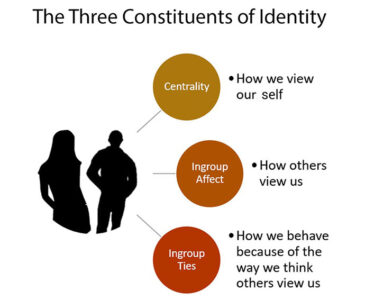There is probably not a single corporate or business leader on planet Earth who will admit that the business they lead has no mission statement, business values or a sense of purpose. Yet a Deloitte study released in May 2020 when most of the world was in lockdown, the pandemic was raging and uncertainty over the future was a constant worry, revealed that just 16% of business leaders expected to invest in the reinvention of their workforce.
The gap between those who understand what needs to be done and are willing to do it and those who simply hope for a return to “business as usual” is frightening. It is also understandable. If anything it highlights the link between resilience in leadership and resilience in a business.
So what is resilience to begin with? How does it manifest itself in an organization that is already geared to improve incrementally and change with the times? And if it isn’t there, how do we get it? These are the burning questions today’s business leaders should be thinking about.
So, let’s start from the easiest one first.
What is resilience?
The textbook definition of resilience in any setting and just about every context is the ability to bounce back to an equilibrium after experiencing an adverse situation. Personal trauma, the failure of a product launch, a sudden change in market conditions, widespread workforce unease, global supply chain bottlenecks and a worldwide pandemic, all qualify as such.
If this century is going to be remembered for anything it is going to be for the unique set of circumstances it presents leaders with which demand a hefty dose of resilience. That alone also marks this century as a transition point from leadership metrics that are ‘hard’ and external to ones that are ‘soft’ and internal. Past business leaders measured their worth via personal accomplishments, the education they had, the awards they had won and the companies they had run. The leaders of this time will be measured by that indefinable quality we call “character”.
Resilience is a character trait. It may sound like I’ve just performed a magic vanishing trick. Instead of defining resilience I hid it within the depths of the ill-defined concept of character. The thing is this century is going to also be remembered for something else too: our ability to use hard science and ground-breaking technology to look inside the thinking brain. In doing so we have acquired the extraordinary ability to strip back some of the ambiguity surrounding our motivation and our actions so we can better see the root causes that make us do some of the things we do.
We know, for example, that every thought has an origin in a stimulus that arises from our environment and the way the thought is processed can be tracked across the thinking brain. We also know that every action has an intent that is designed to reduce the energetic cost associated with our survival. In plain speak everything we do is designed to make our life just a little bit easier.
The moment we reduce stimulus and action into a system the difference between an individual and an organization is mostly one of scale. For instance, what we call “character” in a person is called “culture” in an organization and they’re both defined by the collective actions each entity undertakes over a period of time.
My actions and yours are intended to provide some benefit to our respective lives. Enterprise also acts to ensure its own survival. What guides both sets of actions equally, are the values each holds that allow it to prioritize the actions they undertake.
How does resilience enter into this picture? Well, when we are not actually fighting a life or death fight, the actions we engage in so we can navigate the world are determined by our belief system. Our ability to overcome adversity and deal with the unexpected, in that context, is the result of three specific behavioural components: Commitment, Mastery and Competence.
Our willingness to commit to a specific course of action, acquires value only when we can exhibit the competence necessary to learn what is required and adapt our behaviour accordingly so we can master a particular situation through focus and determination. These three behavioural components acquire greater power when they are bounded by pro-social behaviour that leads to bonding.
At the level of the individual bonding is supplied by family ties and the support of friends and colleagues. In an organizational environment bonding is provided by a sense of shared identity in the workplace and team-building activities.
Breaking resilience down to origins
Commitment, Mastery and Competence, in themselves, appear to be a little nebulous. While the first of the three is easy enough to articulate and define the other two are fairly subjective qualities that are open to individual interpretation. Yet, because nothing arises out of nothing we now do have the data necessary to shows us how specific behavioural and cultural attributes which we can quantify give rise to the kind of resilient behaviour we are looking for.
A 2010 study of Australian rural communities broke resilient behaviour down to five distinct behavioural components each of which was made possible by a number of distinct attributes which, in their totality, are representative of the structure of a community or an organization. For a leader charged with navigating the post-pandemic world they are:
- Robustness
- Redundancy
- Resourcefulness
- Response
- Recovery
This is a list of attributes that appears to be equally at home on a corporate wall and a personal development plan. As we’ve already seen corporate culture (and character) are guided by the same components: internal memory and beliefs that form our perception and past experiences that shape our expectations.
Unsurprisingly, each of the five attributes that make up resilience is, in turn, made up of real-world characteristics and behaviours we can immediately recognize. The figure below breaks each of them, down in turn.

The shape of resilient leadership
Successful leaders, this century, will be the ones who work to develop resilience in themselves and their organizations. In the first instance this requires a sense of alignment. A leader whose values are not mirrored by the organization environment is essentially handicapping themselves.
Leaders operate out of personal conviction (i.e. character). Organizations however require processes in place that ensure that everything those inside them need to do their job and develop themselves is provided. Leaders who achieve cohesion in their values and those of their organization also find alignment with the general beliefs, aims and values of their teams and co-workers.
This makes modern day leadership in a century where uncertainty and ambiguity are the norm, become an exercise in synchronization between different departments and people. By employing a narrative that unites everyone and provides a deeper meaning to the work being done leaders lay the foundations on which that all-important sense of purpose can be built.
It’s an approach that requires soul-searching, an activity that is not traditionally associated with leadership and work. It delivers however the kind of deep workforce commitment and systemic agility that makes for success in an uncertain world.
David Amerland is a Chemical Engineer with an MSc. in quantum dynamics in laminar flow processes. He converted his knowledge of science and understanding of mathematics into a business writing career focusing on search engine optimization (SEO), search marketing, social media, decision-making, communication and personal development. His latest book “Intentional: How to Live, Love, Work and Play Meaningfully”* is out now.
*As an Amazon Associate I earn from qualifying purchases.


Thank you so much for the opportunity to publish this on your blog Tanveer.
It’s my pleasure, David; appreciate having you share your insights with my readers to help them better understand the role resilience plays in leadership.
David, this is so…well…intentional. 😊 Resilience is the foundation of movement